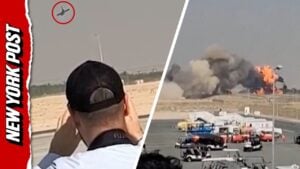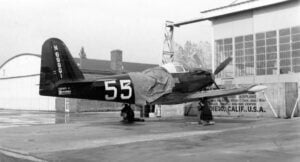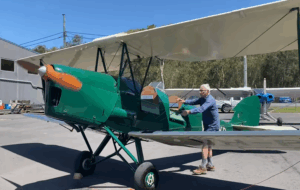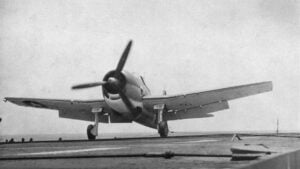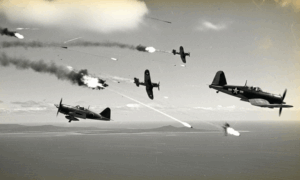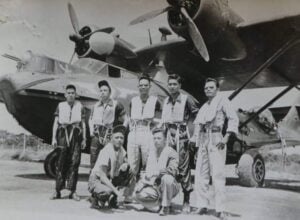Why This Plane Was the Allied Unlikely Flying Weapon During WWII
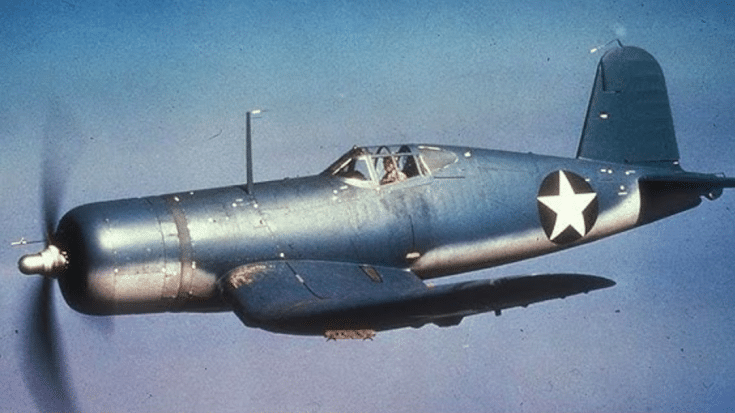
World War Military History / YouTube
During World War II, the Allies faced fierce challenges in the air, especially in the Pacific Theater. Among the numerous aircraft developed to meet these challenges, the Vought F4U Corsair emerged as a unique fighter. Although it began with a reputation for being difficult to handle, this plane eventually became a vital asset for Allied forces. The journey of the Corsair from a troublesome aircraft to a respected fighter is a story of adaptability and ingenuity. The experiences of pilots like Lieutenant Kenneth Walsh and the engineering adjustments by Vought’s team highlight the resilience of this aircraft.
The Ingenious Design of the Corsair
The Corsair’s unusual design and capabilities made it a standout. The inverted gull-wing shape, which dipped near the plane’s body before curving upward, was more than just a visual feature. It allowed the Corsair to house a large 13-foot-4-inch propeller powered by the powerful Pratt & Whitney R-2800 Double Wasp engine. This engine could propel the aircraft to speeds over 400 miles per hour, making it one of the fastest fighters of its time. However, the propeller’s size presented a challenge—engineers had to find a way to ensure enough clearance from the ground without weakening the plane’s structure. The distinctive wing shape solved this problem, enabling the Corsair to be strong and aerodynamic.
In 1938, the U.S. Navy saw the potential of Vought’s design and funded its development. By May 1940, the prototype, called the XF4U-1, achieved a breakthrough, reaching a speed of 405 miles per hour during test flights. This achievement demonstrated the Corsair’s potential as a high-speed fighter. However, making the Corsair combat-ready involved overcoming a range of technical challenges.
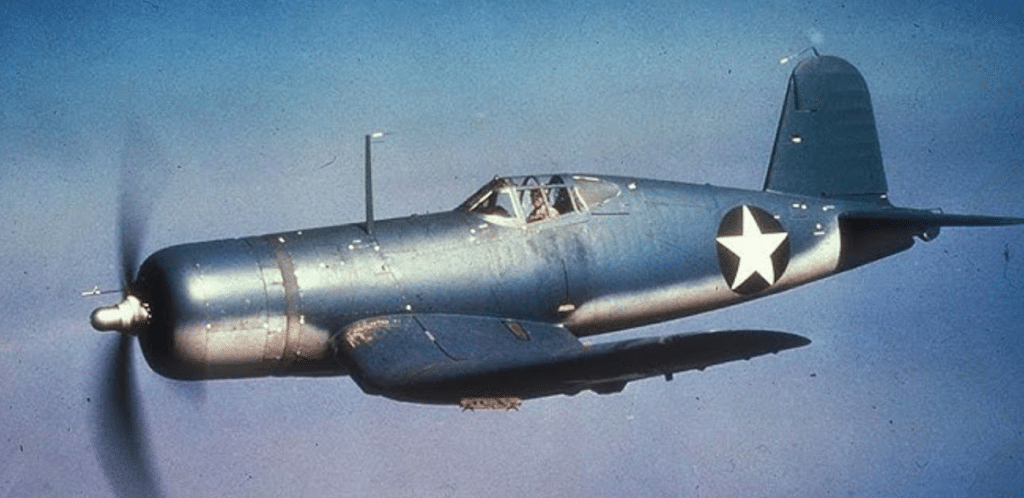
Challenges and Modifications in the Corsair’s Development
The U.S. Navy needed more firepower in the air as World War II escalated, leading to modifications in the Corsair’s design. Engineers equipped the aircraft with six .50-caliber machine guns, significantly enhancing its firepower. But this change also required adjustments to the fuel system, forcing the cockpit to be moved further back. This shift in the pilot’s position made it more difficult to see during landings, which would become a critical issue during carrier landing trials.
When the Corsair underwent its first carrier landing tests in late 1942, the results were far from smooth. Lieutenant Commander Sam Porter’s attempts to land the plane on the USS Sangamon were fraught with difficulty. With the cockpit positioned far back, Porter had trouble seeing the landing signals, and the Corsair’s long nose further blocked his view. Additionally, the landing gear’s tendency to bounce on impact made it difficult to control the aircraft on a carrier deck. To make matters worse, the aircraft had a dangerous tendency to drop its left wing during slow approaches, often causing a sudden roll.
Overcoming the Corsair’s Landing Challenges
This landing issue was tied to the Corsair’s powerful engine and large propeller, which created uneven airflow over the wings. The left wing tended to stall first, leading to an unexpected roll during landings. The problem posed a serious risk, especially for less experienced pilots. Some might panic and increase throttle to recover, but the engine’s torque could worsen the situation, resulting in a crash. The Corsair’s unpredictable landing behavior earned it a reputation as a “widow-maker” among some pilots.
However, Vought’s engineers and Navy analysts worked together to solve the Corsair’s flaws. They discovered that installing a small spoiler strip on the right wing could reduce the uneven lift and ensure a more balanced stall. This strip, though only a few inches long, made a significant difference. It allowed the aircraft to stall evenly, making its behavior more predictable during landings. This simple adjustment helped transform the Corsair into a more reliable aircraft, enabling pilots to better handle it during carrier operations.
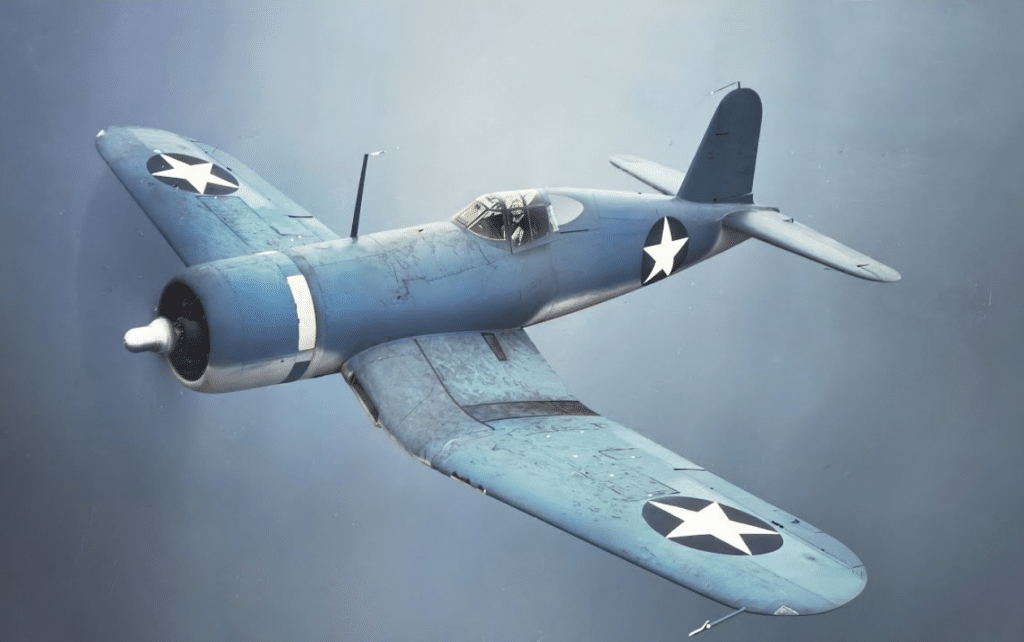
Innovations and Techniques for Enhancing Corsair’s Carrier Suitability
As engineers continued refining the Corsair’s design, changes such as increasing air pressure in the landing gear struts helped reduce the bouncing problem. The introduction of a new “bubble” canopy design improved visibility, allowing pilots to better see the deck during landings. These changes made the Corsair more suitable for combat operations, particularly for the Marine Corps, which initially used it primarily from land bases rather than carriers.
One of the key breakthroughs in making the Corsair effective for carrier use came from the British Royal Navy’s Fleet Air Arm. They developed a curved landing approach that allowed pilots to better see the carrier deck as they descended. This technique proved crucial for landing the Corsair safely and was later adopted by the U.S. Navy. While the aircraft remained challenging for new pilots, these improvements made it more suitable for carrier-based operations.
The Marine Corps’ Early Missions
The Corsair first saw combat with Marine Corps Squadron VMF-124 in February 1943. These early missions in the Pacific were marked by fierce engagements with Japanese forces over island battlefields like Bougainville. Pilots had to adapt quickly to the quirks of the aircraft while facing formidable opposition in the skies. One of the most notable pilots, Lieutenant Kenneth Walsh, flew many missions in the Corsair and faced both enemy fighters and the challenges of controlling the aircraft’s quirks. The plane’s speed and firepower gave him and other pilots an edge, even as they continued to navigate its complexities.
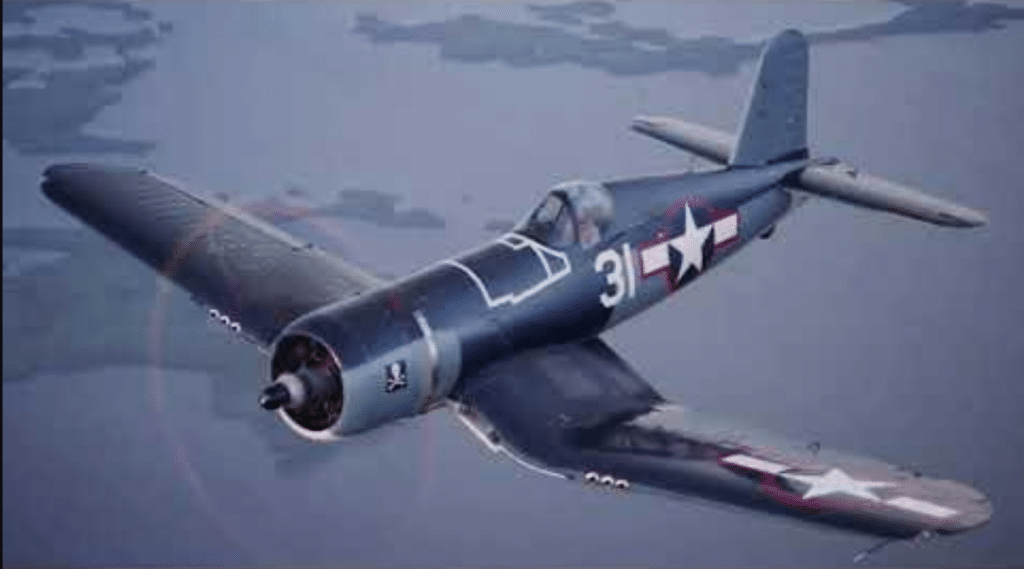
On August 30, 1943, Walsh found himself alone in the skies against 50 Japanese fighters. Despite being outnumbered, the capabilities of his Corsair allowed him to survive the encounter. The Japanese forces eventually gave the plane a nickname, “The Whistling Death,” due to the distinctive sound of its engine in flight. This moniker reflected the respect that the Corsair earned from both its pilots and opponents.
Through persistent engineering efforts and the dedication of its pilots, the Vought F4U Corsair transitioned from a problematic aircraft to a reliable fighter. Its combination of speed, firepower, and adaptability made it a valuable asset to the Allies in the Pacific, especially as it became a more effective carrier-based fighter. Though it started with a challenging reputation, the Corsair eventually proved its worth as a formidable weapon in World War II’s aerial battles.














